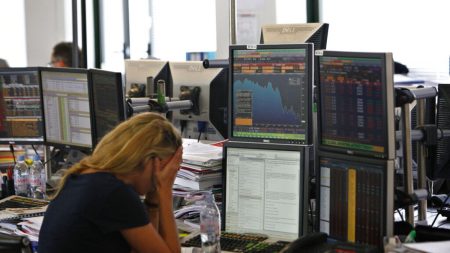Paragraph 1: Inflationary Trends in Germany
Germany experienced persistent inflation throughout 2024, with the annual average rate reaching 2.2%, significantly lower than the 5.9% recorded in 2023. December 2024 witnessed a year-on-year inflation rate of 2.6%, the highest since January of the same year and exceeding the European Central Bank’s 2% target. This rise was primarily driven by escalating service and food prices, which grew by 4.1% and 2% respectively in December, compared to 4% and 1.8% in November. While energy prices continued to decline, the pace of deflation slowed to -1.6% in December from -3.7% in November. The month-on-month inflation rate for December reached 0.5%, a significant increase from -0.2% in November and surpassing preliminary estimates of 0.4%.
Paragraph 2: Core Inflation and Economic Contraction
Despite the overall decline in annual inflation compared to 2023, core inflation, which excludes volatile food and energy prices, remained elevated at 3% for the full year 2024, down from 5.1% in 2023. This suggests underlying inflationary pressures persist within the German economy. Furthermore, the German economy experienced a second consecutive year of contraction, shrinking by 0.2% in 2024 following a 0.3% decline in 2023. This stagnation underlines the challenges faced by the German economy amidst changing global dynamics.
Paragraph 3: Manufacturing Sector Woes
The manufacturing sector played a significant role in the economic contraction, with output falling by 3% in 2024. This decline was largely attributed to weakness in the automotive and machinery sectors, key industries within the German economy. These sectors faced headwinds from various factors, including global supply chain disruptions, changing consumer demand, and the transition to electric vehicles. The contraction in manufacturing underscores the structural challenges faced by these industries and their impact on overall economic growth.
Paragraph 4: Construction Sector Decline
The construction sector also experienced a significant downturn, contracting by 3.8% in 2024. This decline can be attributed to a confluence of factors, including rising interest rates, which increased borrowing costs for construction projects, and escalating construction material prices, squeezing profitability. These challenges dampened investment and activity in the construction sector, further contributing to the overall economic contraction.
Paragraph 5: Household Consumption Resilience
Despite the economic downturn, household consumption showed resilience, registering a marginal increase of 0.3% in 2024. This growth was primarily driven by increased spending on transport and healthcare. The relative stability in household consumption suggests that consumer confidence remained somewhat intact despite the broader economic challenges. This could be attributed to factors like low unemployment rates and government support measures.
Paragraph 6: Underlying Economic Pressures
The German economy faced both structural and cyclical pressures throughout 2024. Increased competition in key export markets, particularly from emerging economies, posed a significant challenge to German industries. The ongoing transition to a greener economy and the associated investments also impacted economic activity. Additionally, elevated energy costs, lingering geopolitical uncertainties, and the global economic slowdown further contributed to the sluggish economic performance. These factors underscore the complex interplay of internal and external forces shaping the German economic landscape and highlight the need for adaptable policies to navigate these challenges.














